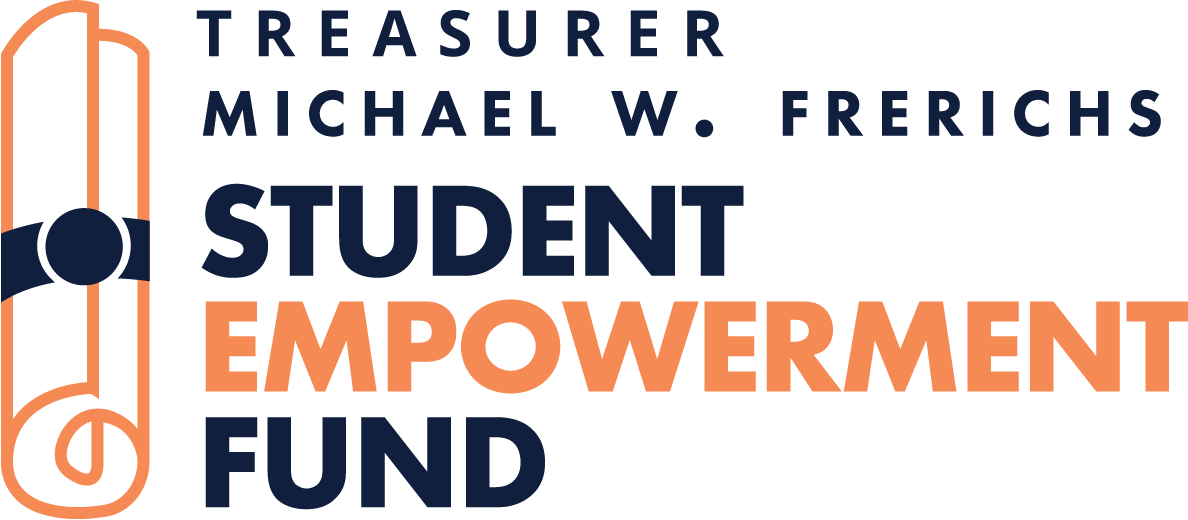
Lower-Rate Private Student Loans for Illinois Residents
Reducing Your Student Debt Burden
Illinois college students should be able to learn today and thrive tomorrow. The Student Empowerment Fund (SEF) makes this possible by providing capital for lower-rate private loans.
SEF helps Illinois residents attending in-state colleges by reducing student debt, making it possible for more Illinoisians to pursue higher education. To qualify, borrowers must attend a public or private not-for-profit institution.
The Illinois Treasurer’s Office also oversees a nationally-recognized 529 college savings program and views the Student Empowerment Fund as an investment in Illinois residents and their futures. This initiative is part of a broader strategy to enhance access to higher education across the state.
Start your journey toward reducing your student debt by exploring your loan options.
Addressing the Student Debt Crisis
Student debt is on the rise. For the 2022-2023 academic year, annual costs for tuition, fees, room, and board were estimated to be $20,400 at public four-year institutions and $52,800 at private four-year nonprofit institutions1. During those same years, the Federal Direct loan limits for first-year dependent and independent undergraduates were $5,500 and $9,500, respectively2. Increasingly, private student loans fill the gaps that federal loans, grants, and scholarships do not cover. Many students have found themselves choosing between taking on expensive private debt or dropping out of school. The cost of higher education can cause graduates to delay home purchases, retirement savings, business ventures, and other major economic decisions3. Lower-rate private student loans, backed by the SEF, can help reduce the long-term financial impact of student debt.
Student Debt in Illinois by the Numbers
National Student Loan Debt Growth
13% Illinois Residents with student loan debt
$39,055 Average student loan balance per borrower
$62 billion Approximate amount of student loan debt held in Illinois
6th Highest on the list of average debt in the United States
52% Student Loan Borrowers under age 35
A Public-Private Partnership for Lower-Rate Student Loans
The Illinois Treasurer’s Office created the SEF to empower Illinois collegians and graduates to make confident decisions about student loans and debt. By partnering with trusted lenders, the SEF provides private loans at lower rates than other private competitors.
Explore Your Loan Options
Illinois Partnership Loan and Illinois College Family Loan
The SEF offers two loan options through ISL Education Lending (ISL): the Illinois Partnership Loan, designed for student borrowers with a cosigner, and the Illinois College Family Loan, for parents of students. Both private loans are available to all Illinois residents attending a not-for-profit Illinois institution.
ISL is a non-profit lending institution with strong student borrower protections. The Illinois Treasurer’s Office provides capital to ISL, and ISL provides lower-interest rate private student loans to Illinois residents attending an Illinois higher education institution.
The Illinois Partnership Loan and the Illinois College Family Loan offer private student loans with no fees, flexible in-school payment options, and a Fixed Annual Percentage Rate of 3.45% APR – 6.77% APR.*
* The lowest annual percentage rate includes a 0.25% interest rate reduction for enrolling in and maintaining auto-debit once the loan is in full interest and the principal payments. Without enrolling in auto-debit, the rate will range from 3.70%–6.77% APR. Note: Not all borrowers receive the lowest rate. If you are approved for a loan, the rate offered will depend on your credit profile and the term you select and will be within the ranges shown above assuming the auto-debit interest rate reduction applies.
Illinois No-Cosigner Loan
We also offer an additional private no-cosigner loan option through Funding U. The Illinois No-Cosigner Loan offers private student loans for borrowers without a cosigner and has no fees, flexible in-school payment options, and a Fixed Annual Percentage Rate (APR) of 8.49% to 9.99%* for upperclassmen and 9.49% to 9.99%* for underclassmen, depending on your creditworthiness, academic performance, and the repayment option you select.*
This private student loan product was designed for borrowers who have struggled to access private student loans because of a lack of credit score or adequate cosigner. There is no credit score or cosigner requirement to apply for this loan. The Illinois Treasurer’s Office provides capital to Funding U, and Funding U provides lower-interest rate private student loans to Illinois residents attending an Illinois higher education institution.
*Borrowers can qualify for a 0.50% interest rate reduction by enrolling in automatic monthly payments from a checking or savings account lowering the interest rate range to an APR of 7.99% to 9.49%. This auto-pay discount is applied as long as automatic payments are maintained. Credit or debit card payments do not qualify for this discount.


